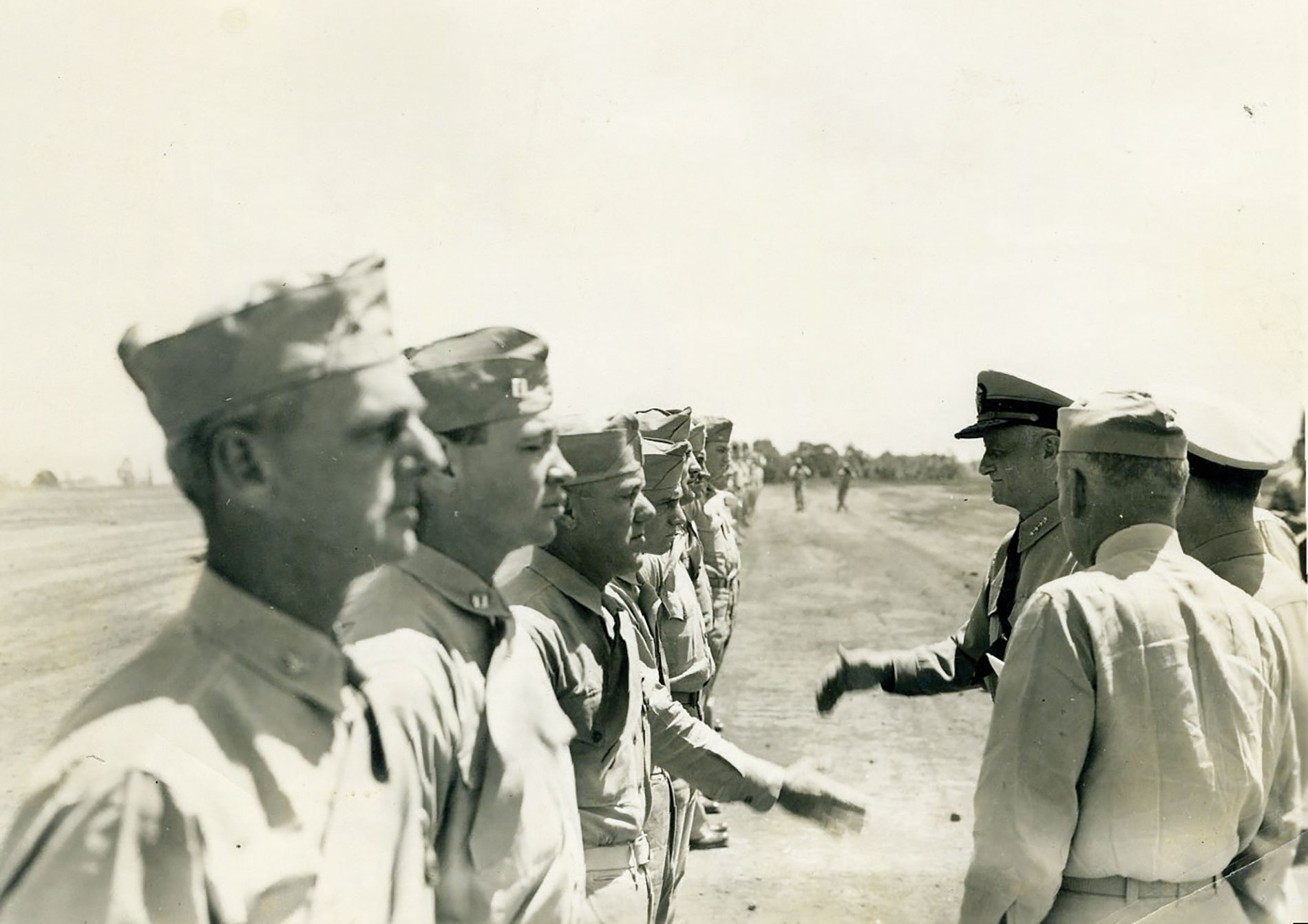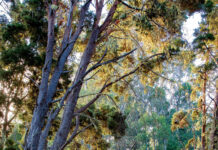The island of Maui is known for rainbows, beaches, nature and much aloha. But during World War II, it had a very different vibe.
Story by Lara McGlashan | Photography by Ryan Siphers
When Derek Hoyte purchased the 18-acre property in Ha‘iku in 2004, he had no inkling of its history. He had noticed several large concrete pads dotted around the acreage, as well as a wide, low area that vaguely resembled a baseball field, but other than that, he simply thought it would be a nice place to build some single-family homes.
One day, he saw a man driving down the road in a restored Dodge military truck. He hailed the driver and asked where he had gotten the vehicle. “You mean you don’t know the history of the area?” asked the man. He then proceeded to tell Hoyte the story of Camp Maui, the site of the “Mighty Fighting 4th” Marine Division during World War II — and also the site of Hoyte’s property.
Camp Maui was a 1,600-acre military base that housed more than 17,000 marines in 2,100 tents. There were baseball fields, movie theaters, mess halls, a post office, military headquarters and a half-mile airfield. Along the topmost edge of the base is a hill whose Hawaiian name is Kauhikoa — but is better known as “Giggle Hill” because of the giggling girls the troops brought up there to neck with in the evenings.
In 1943, after finishing their combat training at Camp Pendleton in California, thousands of marines were deployed directly into action. Between 1944 and 1945, the Fighting 4th traveled between Maui, the Marshall Islands and Japan, and fought four battles that helped defeat the Japanese and end the war.
The more Hoyte learned about the area, the more he wanted to pay homage to those men of yesteryear. He decided against development, and instead built a single home for himself and a zipline course to take visitors on a tour of the historic site by air. He opened the Camp Maui Museum on one of the large WWII-era concrete pads and filled it with artifacts, some found on the property, others purchased at auction, like the two planes hanging from the museum’s ceiling. Hoyte even bought the military truck from the man who had clued him in to the area’s rich history.

Maui was the ideal location for WWII military operations, and a total of 47 tactical training areas were set up all over the island to simulate battle conditions in the Pacific Theater. “For example, beaches [between] Ma‘alaea and Makena were fenced off with barbed wire to keep the public out,” says Bryant Neal, the docent at the Camp Maui Museum. “The [troops] would do maneuvers between Kaho‘olawe and Maui’s south shore with amphibious vehicles, which were the latest technology at the time.”
A 13-mile hiking and shooting course ran through Haleakala Crater, and many marines would later recall that the volcanic ash was similar to the sand they encountered at Iwo Jima. There were staging areas for jungle training in gulches, a live-grenade course, a bazooka area, machine-gun ranges and an antiaircraft firing range.
Military training and exercises were held day and night, but the marines still found time to enjoy themselves. “You have to remember that these were teenagers,” says Neal. “They had never left home, and many had never even seen the ocean. They needed a way to keep their morale up, and sports were high on that list.”
That wide-open area Hoyte discovered on his land — those homesick young men turned it into a baseball field for competitive games. They also played basketball, volleyball, tennis and golf, and had an undefeated football team led by Lt. Colonel Leroy “Pat” Hanley — a former football coach at Boston University. (Hanley and his star player, Howard “Smiley” Johnson, were later killed in action at Iwo Jima.)
The officers had two clubs on base, and attended regular parties at the Maui Country Club in Spreckelsville. Enlisted men were allowed two beers per night, and filled whatever spare time was left with cards, movies, USO shows or excursions into town. “On Saturdays, trucks from the base would stop [in Wailuku] at the Maui Grand Hotel on Main Street, where a gas station is now … and the Wailuku Hotel on Market Street,” says Neal. “Here, they could meet girls and eat and dance.” Ostensibly, many of those very girls contributed to the giggles drifting down the Ha‘iku hillside on balmy Maui nights.
The need for distraction and romance becomes more understandable when you consider the age and maturity level of many of those marines: high school age kids who were going into battle with an enemy they had never seen, in terrain they had never experienced. After each mission, they would return to Maui, fresh recruits would replace those who had fallen, and training would begin again. Over the course of their four missions — the last being the battle at Iwo Jima — 3,298 marines lost their lives, and 17,722 were wounded in battle.
Recently, Hoyte’s portion of Camp Maui was formally recognized by the State of Hawai‘i as Maui’s largest historic site. He offers both zipline* and walking tours of the area, and has plans to expand the museum. “The Marines freed my father from a Japanese internment camp in 1945, saving his life and laying the foundation for mine,” says Hoyte. “I created Camp Maui to honor those who fought for our country, and to educate visitors on this relatively unknown part of Maui’s history.”
Camp Maui & North Shore Zipline, 2065 Kauhikoa Rd., Ha‘iku | 808.269.0671 | nszipline.com | IG @northshorezipline | FB @northshorezips
*The State of Hawai‘i Historic Preservation Department accepted and approved the zipline installation on Hoyte’s 18-acre portion of the property.
Click here to subscribe to Maui Nō Ka ‘Oi Magazine





